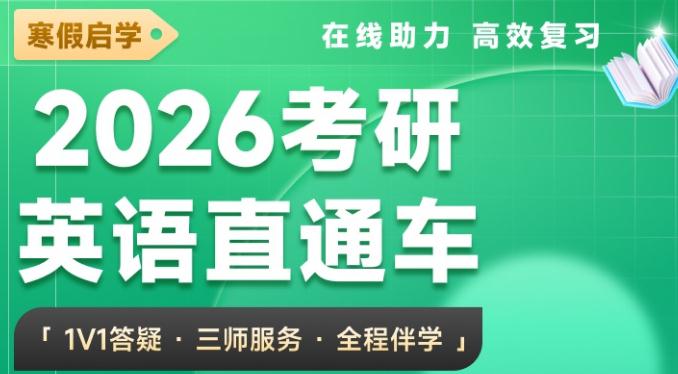1998-2022 ChinaKaoyan.com Network Studio. All Rights Reserved. 沪ICP备12018245号
2011年考研英语备考作文背诵二十八
Changing Roles of Public Education
One of the most important social developments that helped to make possible a shift in thinking about the role of public education was the effect of the baby boom of the 1950‘s and 1960‘s on the schools. In the 1920‘s, but especially in the Depression conditions of the 1930‘s, the United States experienced a declining birth rate -- every thousand women aged fifteen to forty-four gave birth to about 118 live children in 1920,89.2 in 1930,75.8 in 1936, and 80 in 1940. With the growing prosperity brought on by the Second World War and the economic boom that followed it young people married and established households earlier and began to raise larger families than had their predecessors during the Depression. Birth rates rose to 102 per thousand in 1946, 106.2 in 1950, and 118 in 1955. Although economics was probably the most important determinant, it is not the only explanation for the baby boom. The increased value placed on the idea of the family also helps to explain this rise in birth rates. The baby boomers began streaming into the first grade by the mid 1940‘s and became a flood by 1950. The public school system suddenly found itself overtaxed. While the number of schoolchildren rose because of wartime and postwar conditions, these same conditions made the schools even less prepared to cope with the flood. The wartime economy meant that few new schools were built between 1940 and 1945. Moreover, during the war and in the boom times that followed, large numbers of teachers left their profession for better-paying jobs elsewhere in the economy.
Therefore in the 1950‘s and 1960‘s, the baby boom hit an antiquated and inadequate school system. Consequently, the "custodial rhetoric"of the 1930‘s and early 1940‘s no longer made sense that is, keeping youths aged sixteen and older out of the labor market by keeping them in school could no longer be a high priority for an institution unable to find space and staff to teach younger children aged five to sixteen. With the baby boom, the focus of educators and of laymen interested in education inevitably turned toward the lower grades and back to basic academic skills and discipline. The system no longer had much interest in offering nontraditional, new, and extra services to older youths.
全文翻译:公共教育的角色变化
一项重要的、有可能促使人们对公共教育的角色的看法发生转变的社会发展是本世纪五六十年代的生育高峰对学校的影响。 在 20 年代,尤其是在 30 年代后的大萧条中,美国经 历了一次出生率的下降--1920 年每千名年龄在 15 岁至 45 岁的妇女生下大约 118 个存活婴儿,1930 年 89.2 个,1936 年 75.8 个,1940 年 80 个。 随着二战带来的持续繁荣以及随之而来 的经济增长,年轻人比大萧条中的同龄人更早地结婚成家,而且比前辈养育更大的家庭。
1946 年出生率上升到 102%,1950 年达 106%,1955 年达 118%。 对于生育高峰,经济有可能是最重要的决定因素,但它并不是唯一的解释。 不断受到重视的家庭观念也有助于解释 出生率的上升。 到 40 年代中期为止,这些生育高峰出生的孩子们开始源源不断地进入小学 一年级。 到了 1950 年,就形成了一股洪流。 公共教育系统突然感到不堪重负了。
由于战 时和战后的状况,使得学龄儿童人数增加,这些状况使得学校面对这股洪流更加措手不及。 战时经济意味着在 1940 年到 1950 年间几乎没有建立新学校。 而且,在战时和随后的经济 增长时期,大量的教师离开岗位去别处从事报酬更为优厚的工作。 因此,在五六十年代, 生育高峰冲击着陈旧而不完备的学校体系。 这样一来,30 年代以及 40 年代早期,"监护理 论"就不再有意义了。 也就是说,通过使 16 岁以上的年轻人留在学校不进入劳动力市场的 做法再也不是教育机构的优先考虑了。 因为教育机构不再能找到场地和教师来教育那些更 小的 5-16 岁的孩子。 随着生育高峰,教育者和圈外人士对教育的兴趣和焦点,不可避免地 转向了更低的年级和基础的学术技能和学科上。这个系统不再有浓厚的兴趣给较年长的年 轻人提供非传统的新式的和额外的服务。
来源未注明“中国考研网\考研信息网”的资讯、文章等均为转载,本网站转载出于传递更多信息之目的,并不意味着赞同其观点或证实其内容的真实性,如涉及版权问题,请联系本站管理员予以更改或删除。如其他媒体、网站或个人从本网站下载使用,必须保留本网站注明的"稿件来源",并自负版权等法律责任。
来源注明“中国考研网”的文章,若需转载请联系管理员获得相应许可。
联系方式:chinakaoyankefu@163.com
- 2026考研英语全程班 6班
- 权威高配师资亲授技巧,教研千锤百炼科学提分。直录播课相结合精讲互动二合一,专业团队精细化作文批改。讲练结合,随学随练稳步提升。支持试听~
- 主讲团队:王江涛、谭剑波、董仲蠡、许聪杰、陈志超、潘赟、郑艳彤、易熙人

扫码关注
了解考研最新消息












